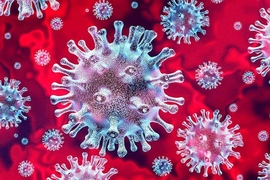In the face of the Covid-19 pandemic, MIT Solve launched a new Global Challenge: How can communities around the world prepare for, detect, and respond to emerging pandemics and health security threats? Solve’s mission is to foster innovation, seeking out tech-based social entrepreneurs and helping them scale up their ideas.
The new Solve Health Security and Pandemics Challenge is designed to produce both short-term solutions to the impact of the current pandemic as well as longer-term strategies for future crises. “The reason that this pandemic is costing so many lives is that we were unprepared,” says Pooja Wagh ’06, Solve’s director of health community and results measurement. “We need stronger health care supply chains and better disease surveillance. This will happen again, and we need to be better positioned to mitigate the impact on human lives.”
MIT Solve hopes to leverage its extensive community to identify tech innovations that will make a difference. “We had a role to play because of our massive network of innovators, member organizations, MIT students and faculty, and all the people we reach through our communications,” says Wagh.
“Solve was built on the ethos that great ideas can come from anywhere,” she explains. “The idea was to democratize access to the resources we have at MIT, since a lack of resources keeps many great solutions from coming to fruition.”
There are several rounds of review in the Solve selection process, with 50 to 60 experts from both inside and outside MIT reading every application. “We draw on the experience of our community,” says Wagh. “Decision makers are a panel of judges with deep expertise in the relevant areas. For this challenge, judges will include representatives from public health agencies and corporations.”
In addition to the new health challenge, Solve issued its 2020 Global Challenges earlier this year related to jobs and entrepreneurship among marginalized populations, sustainable food systems, maternal and newborn health, and access to education for marginalized girls and women.
“We solicit applications from people all over the world,” says Wagh. “Our network of more than 150,000 people includes centers at MIT as well as 130 Solver teams and more than 120 Solve Members with a wide diversity of interests. What binds them together is their motivation to help our innovators succeed.” A small number of Solver teams are chosen and then matched with partners, including funders, who can help them make their ideas a reality.
“Given the immediacy and urgency of this crisis, we want to build a pathway for scale for all the Solver teams we select,” Wagh says. “We’ve been talking to potential partners and funders, and dozens of people have reached out to offer support for the future Solver teams that are selected. Others want to help us choose the teams. People should know that we’re looking for both applicants and supporters — there is a role for anyone who wants to engage.”
There has been an enthusiastic response to the new challenge, with applications pouring in. Individuals and groups with a tech-based solution to health security threats are invited to submit a proposal by June 18, while potential supporters of the teams chosen can investigate options for partnership with Solve.










